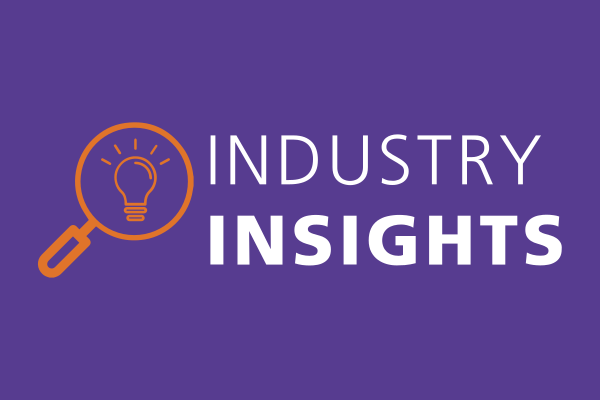I have always found one of the most exciting things about the nonprofit sector to be its diversity. Nonprofits encompass organizations of all sizes, varied organizational structures, unique missions, and a limitless range of fundraising priorities. Yet for all that may be different, everyone experiences similar fundraising challenges—especially when it comes to identifying prospects for major giving.
Data is the most powerful tool for addressing this challenge, and it’s getting even better. Artificial intelligence offers exciting new opportunities to expand access to data, streamline the generation of data insights, and apply those insights and predictive analytics across day-to-day prospect research and fundraising tasks.
Understanding Industry Trends
The broadest industry benchmarking data is a good place to start. It provides a bird’s eye view of the state of major gift fundraising in recent years:
- The total number of active donors declined by 4.5% from 2023 to 2024, the fourth consecutive year of decline in overall donor count
- The average individual gift increased from $858 in 2023 to $937 in 2024, continuing a steady upward trend since 2019
- High net worth donors continue to give more: revenue from gifts over $50,000 grew by 65% across higher education institutions in 2024
- The largest intergenerational wealth transfer in history is underway, with some estimating that up to $9 trillion could flow to nonprofits as a result.
As we can see, there are a smaller number of donors giving more than ever before—but their support doesn’t come easy. They require high-touch, personalized cultivation over an extended time. On average, it takes two to three years from the first touchpoint to secure a new major gift, and first-time major gifts require more than five years of relationship building.
This is where focused data comes into play. Although fundraising is undoubtedly an art form in part—there’s a critical human element to building the long-term relationships that inspire major giving—it’s also a science. The science of fundraising is built on valuable constituent data that can help your organization steer resources toward high-potential opportunities and cultivation efforts. Below, I’ll touch on some of the most common practices I’ve observed among successful, data-driven nonprofits.
Making Identification Proactive, Not Reactive
Ask a fundraiser what triggers their nonprofit to elevate a constituent to a higher level of solicitation (i.e., to midlevel or major giving), and the answer will often be something along the lines of “when they give a gift of $1,000 or more” or “when they attend at least three events in a given quarter.”
This is reactive prospect identification.
By waiting for the prospect to take the initiative and essentially “raise their hand,” you unintentionally delay the start of a high-touch cultivation process that—as we discovered above—is already going to take a long time.
The characteristics of a strong major gift prospect do not suddenly appear when they make their first $1,000 gift. Major gift potential is an observable quality from the moment a donor’s name pops up in your database, even if the event that landed them there seems small or immaterial (like signing an online petition or playing in a charity golf tournament).
How do top fundraisers identify major prospects early on? They rely on a combination of wealth screening and predictive modeling. These proactive methods allow you to flag constituents with the financial capacity and the behavioral likelihood to make large gifts as early as the first time they engage with you. And artificial intelligence improves upon traditional wealth screening and predictive modeling in several ways:
- AI automates processes: Collecting data from multiple sources, importing it into your CRM, and generating lists are all tasks that can be automated, freeing up time for fundraisers to do more strategic, high-touch work.
- AI makes insights more actionable: AI can assess descriptive and predictive datapoints at scale to generate easy-to-read summaries and recommendations. This is much more user-friendly than interpreting the underlying datapoints themselves.
- AI seamlessly embeds insights into workflows: Once you determine a course of action, AI can ensure prospect management best practices by actively guiding human fundraisers through the appropriate workflows in their CRM.
By making your prospect identification proactive rather than reactive, you can cut down on the time to secure a major gift, avoid missed opportunities from prospects who might otherwise never self-identify, and ensure that high-value prospects receive purposeful cultivation that aligns with their value from day one.
Strategically Upgrading Your Asks
Your current donors often represent significant untapped revenue potential. For example, a fundraiser’s thought process might go something like: “If a prospect has already given or demonstrated willingness to give at the $2,000 level, then surely this must be near their capacity, and asking for $4,000 would be a bridge too far, right?”
This assumption isn’t necessarily true, so those fundraisers risk leaving money on the table. Depending solely on screening for wealth can also be a peril, causing fundraisers to settle for a too-low ask. Wealth screening is a valuable tool, but it’s an incomplete measure of giving capacity.
But with the right combination of data, you can truly optimize each ask. Predictive modeling that considers spending behavior rather than just publicly identifiable wealth can better help you refine your gift targets—making a big difference in results.
For example, the fundraisers at University School used modeled capacity and likelihood predictions to identify their best annual fund upgrade targets, sending 1,400 upgrade appeals. They raised an additional $50,000 when 97 donors met the increased ask outright. Another 127 donors opted not to meet the full ask amount but were still inspired to upgrade their gift level. That boost accounted for another $104,000 in extra giving.
The data is there to guide you, so set your target asks confidently. Don’t be afraid to stretch by upgrading donors who are already giving at a high level. You only have so many of these relationships; maximize the value of each one.
Going Beyond Wealth Screening
Simply being wealthy doesn’t automatically make somebody philanthropic, much less a strong prospect for your particular organization. Successful nonprofits utilize a number of variables to gauge a prospect’s value.
Affiliations
Social or country clubs, alumni associations, and other groups can serve as common threads that connect potential donors to your existing supporters: current donors, staff, and so on. Lately, I’ve seen nonprofits achieve fundraising success with campaigns that target the personal and professional connections of board members.
Past Giving
One of the simplest indicators of likelihood to give to your cause is a history of giving to other organizations with a similar mission. Resources such as Blackbaud Giving Search can help you identify donors and gifts by donation type, amount, and recipient mission, giving you visibility into your prospects’ philanthropic interests.
Artificial Intelligence and Pattern Recognition
AI can process large volumes of information like the above much more efficiently than humans. One of the most intriguing emerging applications of AI is for the development of personas. AI can use observations of past behavior and traits to describe who a set of people are and what is most likely to drive their behavior. For-profit companies are using persona models to shape their marketing and engagement strategies with great success, and there’s ample opportunity for nonprofits to leverage the same approach with their donors and supporters.
Identifying Candidates for Planned and Asset-Based Giving
One way to maximize the revenue potential of major donors is to steer them toward planned or asset-based giving. This type of giving offers various tax and liquidity-related benefits to the donor. Many donors who are excellent candidates have simply never thought about giving in this way before, so once again it’s critical to be proactive rather than expecting the prospect to initiate the discussion.
Planned giving is a high priority for Broadway Cares/Equity Fights AIDS, a social services nonprofit providing access to medication, counseling, meals, and financial assistance. Data is helping the organization expand its outreach.
“We’re identifying who in our database is a long-time supporter and at an age where they’re looking at estate planning,” said Sarah Cardillo, senior development officer. “What we are able to understand about people, in terms of their interests and capacity to give, is transformative. It helps us focus our energy, so we are that much more effective in fundraising and, ultimately, in making a difference for those who are simply looking for a helping hand in times of need or crisis.”
A combination of wealth screening services and specialized predictive models can help you proactively identify constituents with favorable characteristics for this type of giving. Structuring these gifts can get complicated, so it may be worthwhile to work with a firm that specializes in helping nonprofits and donors coordinate this type of giving, such as The Giving Crowd.
A More Complete Picture of Your Prospects
As you develop your plan to use data to improve prospect identification, remember that neither wealth screening nor predictive analytics will ever be perfect. But don’t let perfect get in the way of good. At a time when more nonprofits compete for fewer donors with limited resources, data can power your prospect identification, cultivation, and engagement—and ultimately drive the success of your fundraising program
The post How to Use Data to Improve Prospect Identification first appeared on The ENGAGE Blog by Blackbaud.

